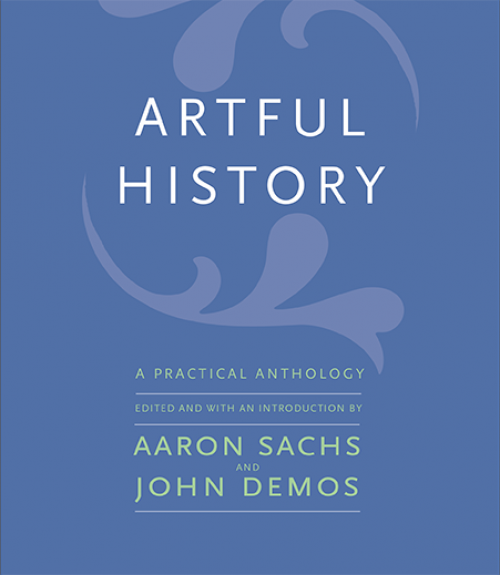Aaron Sachs, professor of history in the College of Arts and Sciences, nearly dropped out of graduate school because he found the assigned reading lifeless.
His career as an academic was saved by historian John Demos, now professor emeritus at Yale, who eschewed conventional forms of writing history. From informal discussions about writing and from Demos’ “Writing History” course, Sachs – who worked as a journalist before graduate school – found another way into writing history: through the artfully-told story.
Now a professor himself, Sachs sees a growing number of historians are writing with literary elegance even as they retain their commitment to rigorous scholarship. To present examples of artfully written history, and to guide current and future historians toward writing that is “eloquent, moving, and memorable,” Sachs and Demos have co-edited “Artful History” (2020).
“Nonfiction writers should have access to just as many literary techniques as fiction writers; some of the tricks of our trade should arise from a sense of craft,” Sachs wrote in the introduction. “We shouldn’t be stuck with the now-classic academic templates emphasizing straightforward, declarative argumentation. Those templates tend to lull readers into passivity. The magic of artfulness is that it activates the senses and the imagination: Artful writing can be not only instructive but also moving.”
This two-part anthology aims to first demonstrate through examples what historical writing looks like when approached as literature, and then to make a theoretical case for writing history artfully.
Among the examples of artistically written history in the book’s first section, Sachs and Demos hold up “Lose Your Mother” by Saidiya Hartman, a scholar of African American literature and history at Columbia. The book excerpt, about Hartman’s explorations of the slave trade in Ghana, is “history as challenge,” the editors wrote: “It darts back and forth between past and present, asking readers to join a communal effort to work through the traumas of both remembering and forgetting.”
In an excerpt from “The Death of Woman Wang,” Jonathan Spence, formerly a professor of history at Yale, thinks his way into a woman’s point of view during the historical circumstances of her murder. “Doesn’t it take acts of imagination to try to understand anything about what it felt like to live at a different time?” the editors wrote. “There is always something more to try to understand, behind the documents, behind the words.”
Jill Lepore, a professor of history at Harvard and staff writer at The New Yorker, writes with humor and gravity in “All About Erections,” an essay about 20th-century American sex education manuals.
The second part of the book argues theoretically for artful history.
In the section’s opening essay, James Goodman, whose book “Stories of Scottsboro” was shortlisted for the Pulitzer Prize, explores the ways narrative relates to analysis.
“The ‘revival of narrative’ has produced a burst of reflection on the very foundations of historical study, including such matters as subjectivity, voice, and the roles of imagination and empathy,” the editors wrote in introducing Goodman’s essay.
Sachs’ own contribution to the book, an essay arguing for “History as Creative Non-Fiction – Or Maybe Even Poetry,” is written imaginatively. In a set of fictional letters supposedly sent in 2007 from a junior faculty member to a senior faculty member and “discovered” by hypothetical archivists in 2049, he lays out the benefits of artful writing to both historians and readers of history.
“I want more space for young historians to be true to their personal vision of history,” Sachs wrote, “which also, I think, will mean the production of more professional history writing that could touch the lives of a broader range of readers.”
Read the story in the Cornell Chronicle.




